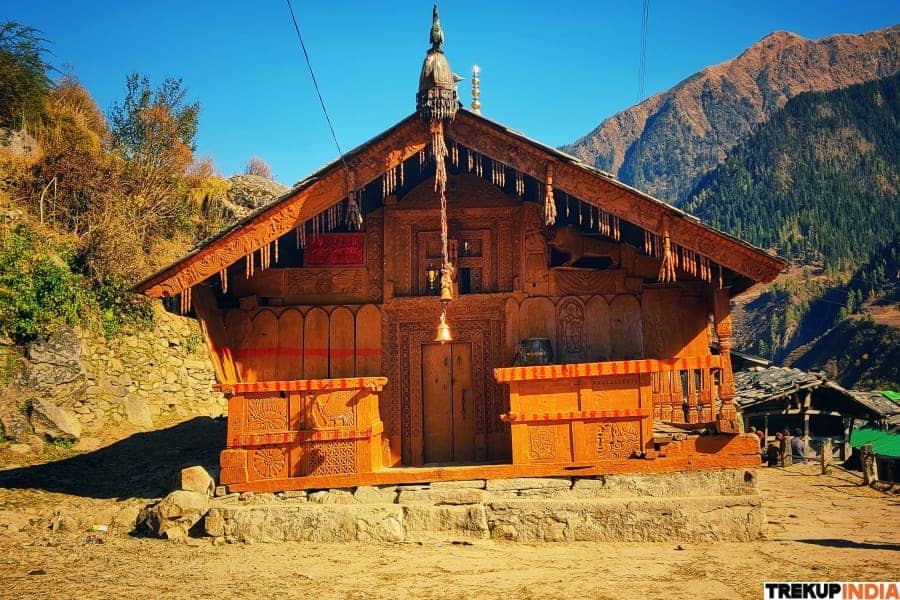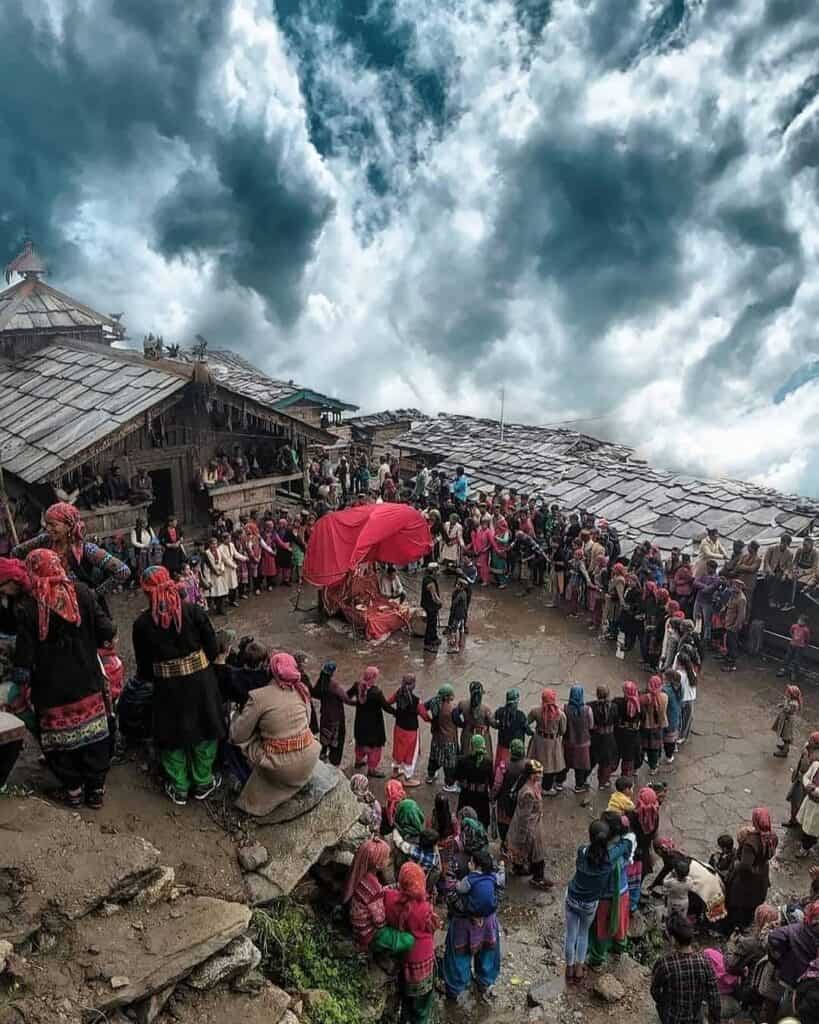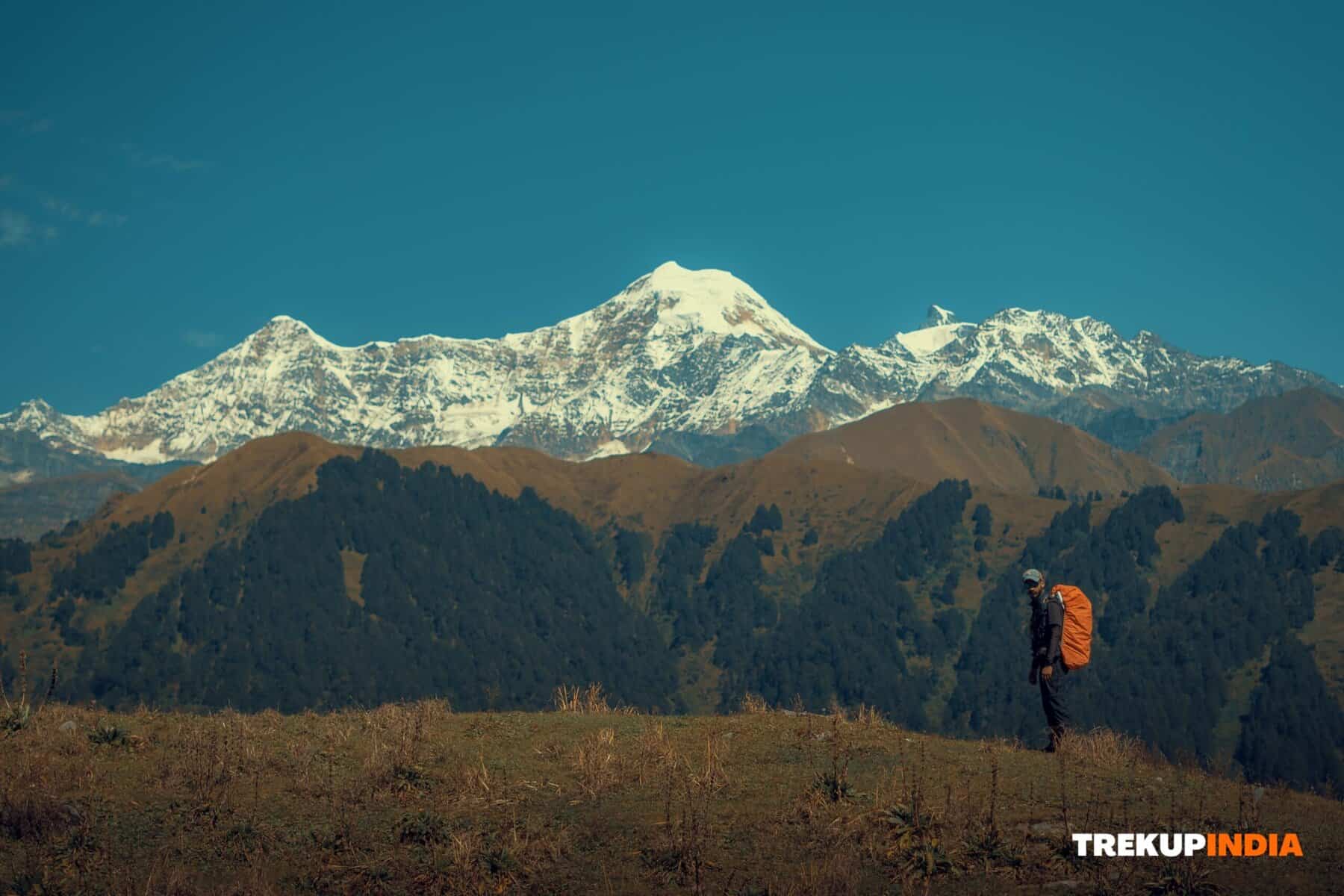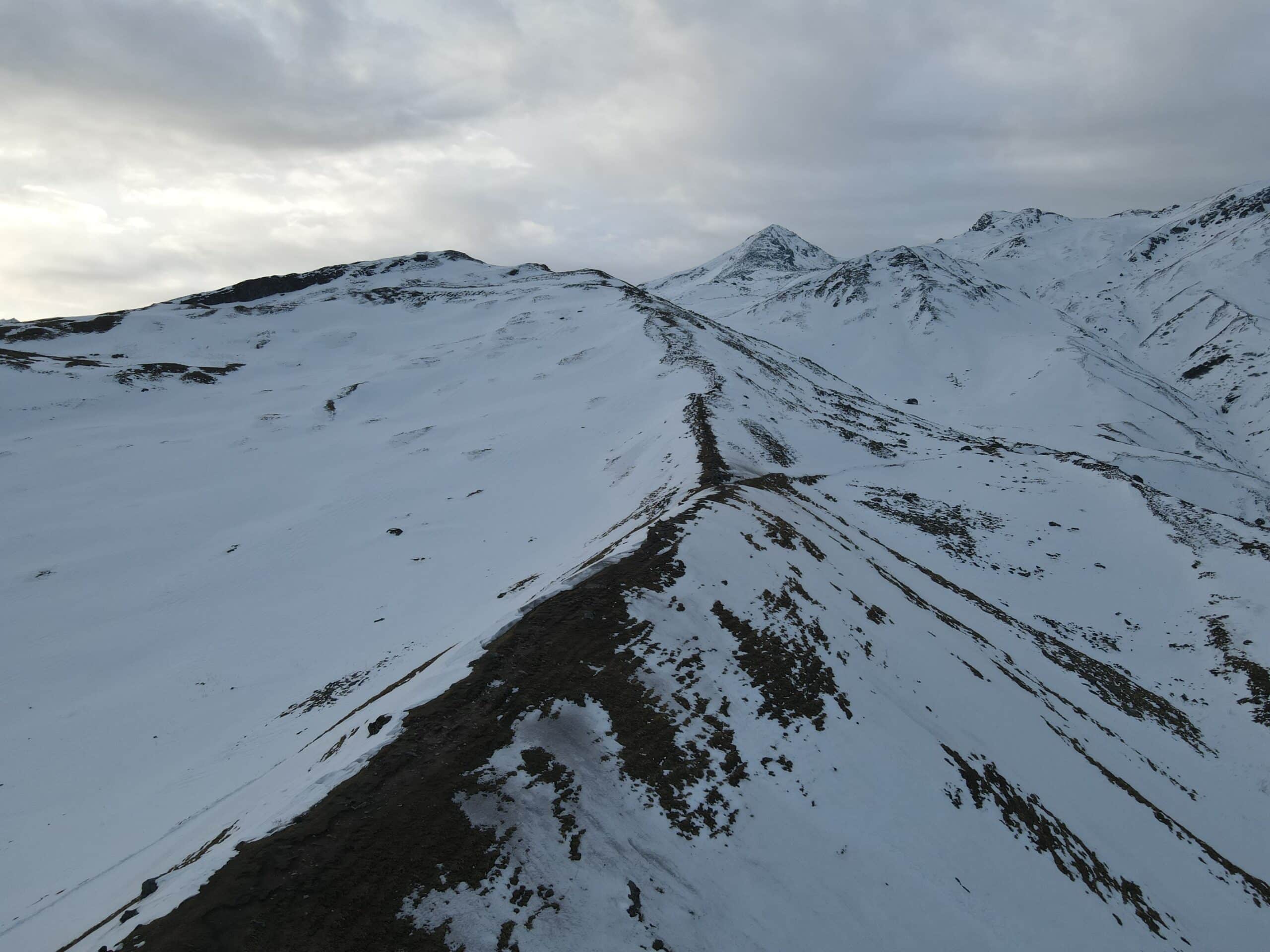Why Trekkers Love Har Ki Dun Trek
The Har Ki Dun Trek is popular among trekkers for several reasons. Beginit’s mesmerizing natural beauty is captivating, offering stunning views of snow-capped mountains, green meadows, and clear streams. The trail perfectly balances excitement and accessibility, making it suitable for both seasoned hikers and novices. The chance to experience the untouched charm of remote Himalayan villages, immerse oneself in their vibrant culture, and enjoy their warm hospitality adds an extra layer of appeal to this trek. Moreover, the Har Ki Dun Valley is a gateway to exploring the diverse wildlife and plant species in the Govind National Park. Finally, the sense of achievement and inner tranquility accompanying completing the Har Ki Dun Trek motivates hikers who desire personal growth and a deeper connection with nature.
The village was a realm of timeless traditions, where life moved unhurriedly, and the inhabitants cultivated the land in harmony with the seasons. The villagers’ vibrant attire, skillfully crafted from various colors, adds vitality to the scenery. The sacred rituals at the temple, the rhythmic pulses of the village drum, and the age-old design of the homes all contributed to an atmosphere that felt frozen in time. The villagers’ folklore and melodies further enriched this captivating tapestry of history and artistry, inviting visitors to immerse themselves in a world untouched by modernity.
It is not surprising that at Trekup India, we have consistently emphasized that this trek is among the most culturally diverse in India. Starting from the starting point at Saur / Sankari, you will immediately sense a profound appreciation for the local culture and a feeling of being transported to a bygone era.
1. Where Traditions Meet and Blend

The picturesque Har Ki Dun valley, also known as Ranwai Ghati or Parvat Ghati, is nestled near the borders of Uttarakhand and Himachal and is adjacent to the Jaunsar Baawar tribal area. As a result, the region boasts a rich cultural heritage that blends elements from Himachali, Jaunsari, and Ranwai traditions, making it a captivating treasure trove of history and heritage.
2. Historical architectural designs and intricate engravings
The charm of the past permeates the air in saur / Sankri, the base camp for the Har Ki Dun trek, where ancient architecture and intricate carvings await your discovery. Some centuries-old wooden houses stand tall and proud, their façades and pillars adorned with delicate floral and leaf patterns and the occasional majestic tiger. The smooth carvings evoke a sense of history and craftsmanship, inviting you to touch and appreciate their beauty. The sweet aroma of Deodar wood fills the air, a testament to the durability and strength of this robust timber, perfect for constructing sturdy homes that have withstood the test of time.
The dwellings’ roofs are crafted from a locally sourced, grey stone material known as Pathaal, which is expertly shaped and polished by skilled artisans who deeply understand measurement, cutting, and polishing techniques.
The wooden houses can reach up to five levels in height and are designated by the number of floors they have, with two floors being referred to as Dwipura, three floors as Tripura, four floors as Chaupura, and so forth.
When you are in Uttarkashi, which is about 8 hours away from Mori, make sure to visit Tiloth. You will find a Panchpura, a wooden house with five floors standing for about 300 years. Remember to inquire about the tale of Nar-Bijola from the locals, which revolves around two brave princes who compete for the affection of a beautiful princess and reside in that very house.
It is quite captivating that these dwellings achieve a seamless combination of beauty andity. Typically, the lower level is designated for housing animals. Apart from offering a secure haven for cows or buffaloes, this area generates significant warmth due to the animal’s body heat. Consequently, it acts as insulation for the entire house.
Engage courteously with the Saur / Sankari, Osla, or Gangaad residents; they will eagerly offer you a tour of their abode. If they like you, they might even treat you to a delicious pahadi tea, accompanied by enchanting tales of deities and demons from local lore.
Our intricate details particularly adore the wooden carvings. These carvings showcase remarkable beauty, with the snow-capped mountains as a stunning backdrop.
3. Temple Of Duryodhana, King of the Kaurava

During your journey, you will encounter numerous temples devoted to the deities of the area, both in the villages and along the path. It will become apparent that the locals profoundly respect the Mahabharata. However, what will astonish you is their practice of venerating the Pandavas and offering prayers to the Kauravas.
During your journey to Osla, you will stumble upon a sacred place solely devoted to Duryodhana, the ruler of the Kauravas. It is worth noting that the Poruvazhy Peruviruthy Malanada temple in Kerala is the sole other recognized shrine dedicated to him.
Located in Osla, this magnificent wooden temple boasts three chambers and is embellished with bells and prayer flags. Take note of the intricately carved pillars at the temple’s front and back, which showcase the skill of ancient Hindu architects. Although the temple has been renamed The Someshwar Temple and rededicated to Shiva, the age-old tradition of drumming thrice daily in honor of Duryodhana remains unchanged, a testament to the enduring cultural heritage of the region.
Legend has it that Duryodhana sought the favor of Lord Mahasu, the deity of this region, to obtain a portion of this valley to protect its inhabitants and wildlife. Granting Duryodhana’s request, Lord Mahasu entrusted him with overseeing the affairs of the people in this territory. Following the war, when both Duryodhana and the Kauravas met their demise, the people of his kingdom mourned their loss, their tears transforming into the river Tamsa – a sorrowful river that continues to flow through this valley.
During the second week of July, a vibrant Doli procession featuring Duryodhana and lively celebratory sounds from the temple courtyard can be expected in Osla.
It is believed by some that the city of Dehradun owes its name to the legendary character of Duryodhan, a figure from Hindu mythology. The city’s name’s origins are shrouded in mystery and legend, highlighting the significant role that myth and folklore play in shaping a culture’s identity.
4. The Fascinating Melas ( Festivals )

The yearly Melas in the mountains are an utterly distinct event. They are brimming with traditional practices and ceremonies that make participating in one a genuinely one-of-a-kind experience. Suppose you find yourself at Har-Ki-Dun during January or September. In that case, you will be welcomed to joyous festivities where vibrantly dressed villagers gather together, singing and dancing to regional folk songs.
The Har-Ki-Dun Valley hosts two types of festivals. The first is the Magh Mela, an annual fair in January, as is customary in many areas of Uttarakhand. However, the second fair, which occurs during the Monsoon months of July, August, and September, is even more captivating. This particular fair is held at night and serves as a gathering for joyful celebrations and a surprising venue for eloping couples.
Numerous young pairs opt to elope during these nocturnal Melas. This custom is predominantly observed by individuals from diverse castes or financially disadvantaged backgrounds, lacking the means to organize a formal wedding celebration. The couple then resides briefly at a family member’s residence, during which elders from the bride’s village visit and discuss with the “fugitive” couple.
In this scenario, the young woman’s perspective is acknowledged, and the elders’ approval determines the societal acceptance of the marriage. If you have intentions of pursuing a comparable course of action, make sure to inform your trek guide so that he can locate you at a later time.
A different and distinct marriage tradition is the idea of Bride Price, which requires the groom’s family to give livestock, referred to as Pashu Dhan, as payment. Typically, this custom is observed by affluent families residing in rural areas.
5. Vibrant and Flavors of Food weaves ( Traditional Clothes )
Visitors to this place are struck by the impressive architecture and the vibrant attire worn by the locals.
The village residents typically create their traditional garments, wooden handlooms, and natural dyes for coloring (although synthetic dyes are increasingly replacing natural ones).
In your journey, you will encounter individuals donning coarse. This textile is crafted from wool and is fashioned into upper and lower clothing items like waistcoats called Sadri, full coats known as Farzi, and trousers called Suthan. These garments provide exceptional warmth, effectively protecting against freezing temperatures, even in sub-zero conditions!
The women in this region wear traditional headgear and jewelry but switch to lighter clothing during the summer. If you’re interested in seeing the local handlooms, ask a villager from Osla or Gangaad, and they’ll be more than happy to give you a tour of their homes and show you their handlooms.
While traveling through the villages, you will come across water mills called Gharat in the local dialect. These mills are constructed from wood and use flowing water energy to grind grains. The initial camping spot, Puani Gharat, derives its name from this practice. Puani means water, and Gharat represents the grindstone. Inside a modest hut, you will discover this traditional water-powered grindstone.
Along your journey, you’ll encounter numerous fully operational Gharats in villages such as Osla, Gangaad, Seema, Dhatmir, and Dharkot. These traditional water mills play a vital role in the local communities, where they crush millets like Ragi and Jhangora for household use.
In addition to everything mentioned, you will have the opportunity to experience the region’s flavors through Lengde (a type of local fern), the untamed mushrooms, Rye, and Palak (local leafy greens). You can also immerse yourself in the local culture by dancing to traditional folk songs, trying out the Raso or Nati dance steps, or simply observing the women singing heartfelt songs of love and sorrow while toiling in the fields.
During the majority of hiking expeditions, it is necessary to allocate one or two hours away from the path to come across a culture that has been firmly established. This is what sets the Har Ki Dun trek apart. In this case, you will encounter this culture directly alongside your route, allowing you to fully immerse yourself and appreciate it.
Why TrekupIndia?
Since 1993
- Trekup India has been one of the most recommended partners for trekking adventure tourism for more than 29 years. Featuring more than 75 Himalayan treks makes us supreme in the domain.
- We have explored trails like Kedarkantha Trek, Rupin Pass Trek, Borasu pass, Bali Pass, etc.
- Trekup India is India’s Oldest, Safest And direct operation trekking organisation. Trekup India has more trekkers than any other organization. 15,000 plus for 2022
We Are Approved And Certified By :-
- Adventure Tour Operators Association of India (ATOAI)
- Indian Mountaineering Foundation (IMF)
- State Tourism Department
What We Do?
- Trekup India is the most trusted trekking company in India. We also sets safety standards for the entire trekking industry.
- Trekup India is the pioneer of trekking in India. Trekup India has brought most trekking routes, trekking systems and trekking equipment to India for Indian trekking.
Save The Trail
- Trekup India’s Save The Trails program is a favorite among trekkers. Our Save The Trails program has made trails, where Trekup India runs trekking, pristine. Save The Trails is a great way for trekkers to leave our mountains better that we found them.
- Trekup India is a unique trekking company that offers the Trekup India’s Trekkers best experience. These transformative experiences are well-designed and leave an indelible impression on trekkers. These have been around for 29 years.






